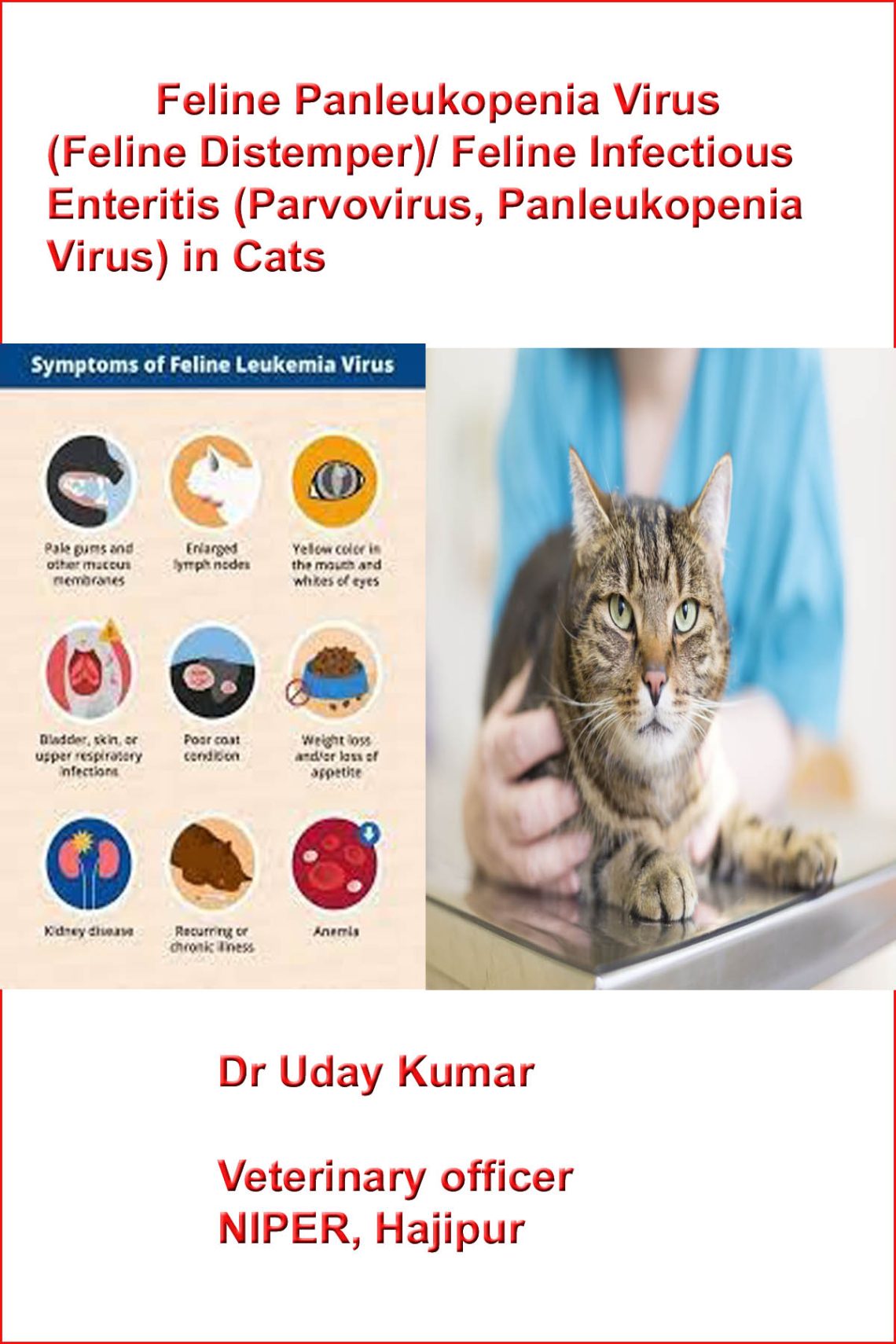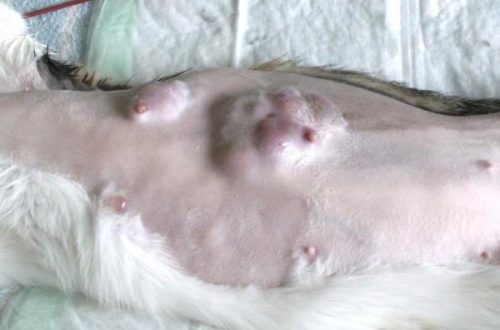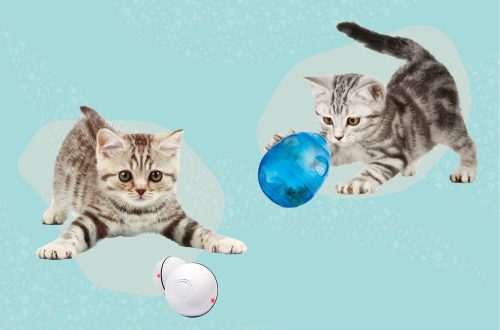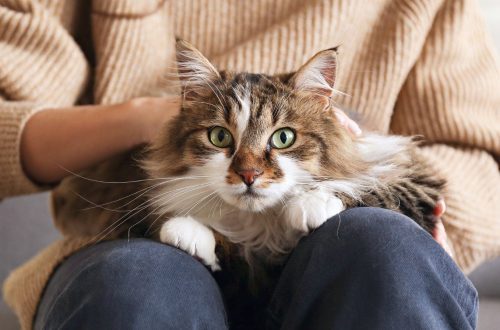
Feline panleukopenia (feline distemper)
Panleukopenia (feline distemper) is a highly contagious viral disease of cats. Let’s talk about what and how dangerous it is.
The causative agent belongs to parvoviruses, a similar one causes parvovirus enteritis in dogs. The virus affects the gastrointestinal tract and the immune system, inhibits the work of the bone marrow. It is ubiquitous, resistant to many disinfectants and high temperatures. It is excreted by an infected animal with vomiting, feces, urine, saliva, can be transmitted through household items – bowls, beds, combs, toys; a virus can be brought to domestic cats on clothes and shoes by a person. Cats of all ages get sick, but the most dangerous disease for kittens, mortality can reach 90%. The mortality rate is higher among cats with low immunity due to poor living conditions (malnutrition, overcrowding, unsanitary conditions, etc.). The virus is especially common in shelters, in “bird markets”, among homeless animals.
Symptoms
Symptoms of panleukopenia can range from the mildest to the most severe.
The incubation period of the disease is 3-12 days. As a rule, the symptoms appear quite sharply, the first symptoms may be fever – up to 41 degrees, and a state of apathy. There is very frequent, up to several times per hour, foamy vomiting with an admixture of blood. Body temperature in the first 24 hours rises, then decreases and after 48 hours rises sharply again with a simultaneous deterioration in the general condition of the animal. After a day, fetid diarrhea with bloody impurities may begin. Cats affected by the panleukopenia virus often have abdominal pain and may hide in the most secluded and hard-to-reach places. Especially if the place is cool. Cats constantly lie on their stomach or are in a hunched position, there is severe pain in the abdomen and bloating. Due to the disease process, the cat ceases to take care of itself, nasal discharge, salivation, conjunctivitis appear, eyes are dull, covered by the third eyelid. The cat stops eating completely. Thirst may persist, but more often not, the animal sits hunched over a bowl of water, but does not drink.
The hyperacute form of the disease is noted in kittens up to 1 year old and is manifested by clinical symptoms of damage to the nervous system. Animals are overexcited, move a lot, shy, hide in secluded cool places, foamy vomiting and diarrhea are noted. Diarrhea may occur. The body quickly dehydrates.
With a nervous syndrome, convulsions quickly develop both in some limbs and throughout the body. Probably the development of paresis and paralysis of the muscles of the limbs. With this form of the disease, mortality is high in the absence of urgent treatment. Survivors of the first 4-5 days of illness, as a rule, recover, but remain virus carriers.
In the reproductive form of panleukopenia in a pregnant cat, kittens in the womb can also be infected – more often in this case, the fetuses die or dissolve, mummification of the fetus or abortion can occur, but if the cat became infected in the last 2-3 weeks of pregnancy, then the virus often affects the brain of kittens. The cerebellum, which controls coordination, is especially affected. Soon (at the age of 2-3 weeks) it becomes noticeable that the kittens exposed to the virus (not necessarily the entire litter) have a particularly unsteady gait and uncoordinated movements (ataxia). Sometimes kittens lose their sight. These kittens eat well and otherwise develop normally, can live a normal feline life, accustomed to the litter box and movement in the space of the room, although ataxia remains for life.
The pulmonary form is less common, the respiratory tract and bronchi are affected. Purulent discharges, sometimes ulcers appear on the mucous membranes of the eyes and nose. Heavy breathing, cyanosis of the mucous membranes, sneezing and coughing, dehydration, and heart rhythm disturbances are noted. Cardiovascular insufficiency develops.
With an unfavorable course of the disease, significant dehydration of the body occurs, electrolyte imbalance, body temperature can drop to 37-38 ° C. General depression of cardiovascular activity, bradycardia and (or) arrhythmia are also noted. In the event of a secondary infection, the likelihood of death increases.
Symptoms can be similar to poisoning and other diseases.
Diagnostics
- There are rapid tests to determine the presence of the pathogen. To do this, a swab is taken from the rectum with a probe, the material is placed in a special solution, and the resulting mixture is dropped onto the test with a pipette. The result is ready within 15 minutes. But this diagnostic method has an error.
- PCR. A wash or feces is sent for research. The result is ready within three days. This is a more accurate research method. Of course, no one will wait for the results to start treatment. But diagnostics are needed to confirm the diagnosis, there is also a high risk of infection of other cats, including when the owner comes in contact with other animals.
- Clinical blood test. One of the characteristic features is a critical drop in the level of leukocytes in the blood, which is evident from the very name of the disease. The number of red blood cells may also decrease.
Treatment
Treatment is symptomatic, there is no specific therapy aimed at destroying the virus. How can you help a cat then? Symptomatic treatment includes:
- Antibiotic therapy to suppress secondary infection. The drugs of choice are the penicillins and cephalosporins. Injectable forms are used.
- Antiemetics
- Droppers with solutions for dehydration
- Blood transfusion – blood transfusion is required when critically low values of leukocytes and/or erythrocytes.
- Feeding. Easily digestible diets are prescribed. If the animal refuses to eat, then force-feed from a syringe without a needle in small quantities.
Prevention
The best prevention is vaccination. A polyvalent drug is used, not only for panleukopenia, but also for other feline infections. The first vaccination is given when the kitten reaches 8 weeks, then revaccination is carried out after 3-4 weeks. After the cat needs to be vaccinated once a year for the rest of its life, even if it does not walk and does not come into contact with other animals. If your cat has died from panleukopenia, it is not recommended to have a new animal for a year, even if disinfection is carried out. Bowls, trays and other items used by and for the cat are also subject to processing or destruction. Before taking a new unvaccinated animal into the house, it is necessary to quarantine for about 10 days.





